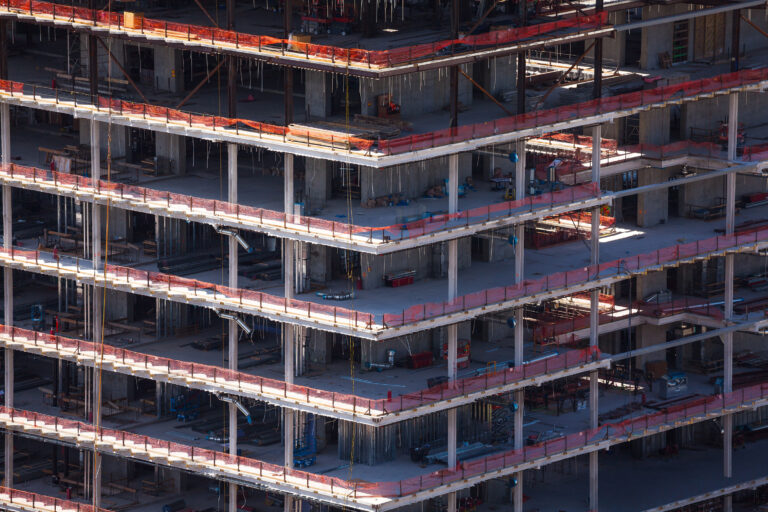Why for-profit housing succeeds
when subsidized housing fails
By Thomas Irwin | March 7, 2024
2023 was a fascinating chapter for housing in Los Angeles. By almost all measures, our city has yet to take the necessary steps to address the tremendous housing crisis honestly. According to Zillow, since January 2016, the median home price in Los Angeles has almost doubled, from $484,000 to $918,087.
One recent study estimated that housing production in the 2010s in Southern California fell short of demand by over 330,000 units, while other studies found more significant shortfalls. While the city keeps expressing intentions to reform its housing progress, it has punted on opportunities for dramatic reform.
But amid the failure to address that broader crisis, 2023 saw a significant bright spot: for-profit developers’ widespread production of affordable housing in Los Angeles. This phenomenon kick-started with Mayor Karen Bass’ Executive Directive 1 (colloquially known as “ED 1”), which she initiated when she came into office. The directive ordered city departments to simplify the process of approving all projects that included 100% affordable units.
ED 1 declared that housing must be approved within 60 days of a completed application. This worked to speed up approval by taking discretion out of the process. This stands in sharp relief to the normal process, which can take multiple years as politicians interfere arbitrarily in ways that foster corruption and dis-incentivize development.
A recent Los Angeles Daily News article documented the impact of ED 1. The authors found that 11,000 homes have been proposed under the program, and all of these are legally bound to offer rents at below-market rates to low-income families. The authors estimated that two-thirds to three-quarters of the proposed units are privately financed by for-profit developers, receiving no public money.
The authors compare the scale of this housing production to Proposition HHH, passed by Los Angeles voters in 2016 to fund housing for homeless Angelinos, which is projected to produce about 10,000 housing units by 2026. However, unlike ED 1 projects, HHH projects cost the city about $1.2 billion. They also have seen significant delays and problems, as detailed in a formal report by the city’s former controller. HHH’s high cost can be partially explained by the fact it is serving higher-need individuals (disabled homeless residents). Still, ED 1 projects are scaling so quickly that they will almost certainly do far more for the vast majority of working Angelinos who feel the pain of the housing crisis, and it has done so without needing new tax revenue.
When one examines the details, one starts to see the intersection of years of work to reform housing in Los Angeles. To build on the program’s success – and for other cities to replicate the success – it’s essential to understand how these reforms have worked together.
Los Angeles’ housing crisis is best understood as a layered crisis, where dysfunction on multiple levels works together to exacerbate the problem. The first area of dysfunction is found in Los Angeles’ zoning code, which regulates several dimensions of how new buildings in different parts of the city can be built. At its core, a zoning code answers two simple questions regarding housing: First, where in a city is it legal to build housing? Second, what size and number of homes can an owner build on that lot?
One way to look at a zoning code holistically is to ask: how many total housing units could be legally built in this city? UCLA urban-planning professor Greg Morrow found that since 1970, zoned capacity in Los Angeles has decreased precipitously. In 1970, Los Angeles’ zoning code allowed for 10 million units. By 2015, that was down to 4.3 million units. Over the same period, the city’s population increased from 2.5 million to over 4 million. To solve the housing crisis, the city needs to embrace up-zoning – i.e., to open up more city lots to housing and allow far more units on those lots.

The second dimension of the crisis is the high governmental costs imposed on new housing. Reporting has found that certain affordable housing developments in LA have cost up to $848,000 per unit. While some high costs are unique to specific projects, constructing new housing in California is almost always more expensive than in other localities. Some of these costs are set by market forces outside of policy makers’ control. For instance, Los Angeles has high wages and higher material costs. But regulations drive many costs, including labor rules, environmental regulations and high impact fees on development. Traditional building codes in California require builders to include functionally unnecessary staircases and parking spaces.
The last layer of the crisis is that California’s housing is built at a slow speed. Like many jurisdictions in California, Los Angeles forces new housing to endure an extended process of approvals for land use and building permits. In the worst-case scenario, projects that require environmental review can take over 3.5 years to finish. This delay leads many developers to walk away from projects while they wait for approval, while others simply avoid Los Angeles altogether. The projects that do endure the process see long delays before residents can move in. The legal and borrowing costs incurred during the approval process drive up the eventual rent levels.
In Part 2 of this series, I’ll look at the specific ways that ED 1 has encouraged housing construction.
Thomas Irwin is a writer who works in the faith-based economic development field. He has worked with several housing and economic advocacy organizations in the region, and lives in East Los Angeles with his wife and two kids.
